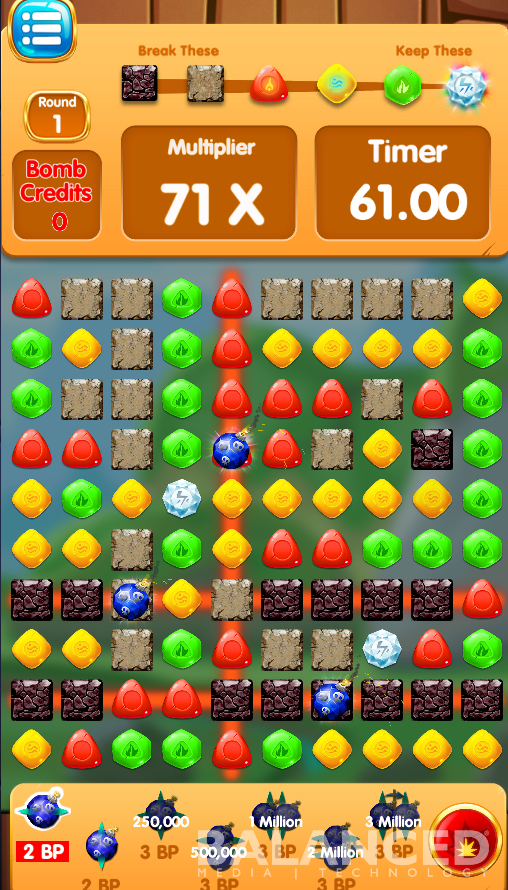
While we might imagine a scientist as a chemist concocting substances in a lab, or a biologist diving with sea creatures, the reality is often far more mundane. Much of science involves collecting and analyzing data, and that process isn’t always very exciting. Think counting bacteria in a petri dish, or noting if two stars look alike in an image of the Milky Way.
But a number of research projects have found a way to buck that trend and turn the grinding work of data collection and analysis into something fun, even rewarding. By creating games that bake the process of data collection into their mechanics, players can contribute data and even uncover new insights just by playing along. Gamification, along with the growing movement known as citizen science, which invites volunteers to take part in real science research, is, in its own way, reshaping what it means to do science.
Gamifying Science
Games that pair citizen science with rewarding play are probing treatments for cancer, helping to cure Alzheimer’s, probing the foundations of language and more. Not only are the games made to be fun, but they address a prevailing issue among crowdsourcing projects: the dropoff rate. Citizen science games tackle the problem with game mechanics that allow players to uncover valuable data through the simple act of playing, keeping them engaged. The results can be striking: Volunteers with the citizen science game Stall Catchers were able to process 50 times as much data as scientists working alone. And research in The Lancet on citizen science volunteers playing the game Cell Slider found that the players were more than 90 percent accurate in classifying images of tumors, nearing the accuracy of trained pathologists.
“The concept is for the player, without actually knowing the background of the problem, without knowing the science of the problem, to be able to do something that helps solve the problem,” says Jay Halderman, the vice president of BALANCED Media|Technology, a video game company that’s created multiple citizen science video games.
The studio’s most recent game is a pattern-matching challenge called Rocks & Runes. Players place cartoon bombs on a board filled with brightly-colored runes, with the goal of destroying rocks and matching runes together. The game might feel familiar to anyone who’s ever played Candy Crush, and it takes all of five minutes to get the hang of.

But beneath the bursts of color and flurries of point multipliers, players’ decisions are actually sorting through data from FDA-approved drug compounds to identify those that might be useful against multiple-drug-resistant chemotherapy. By eliminating rocks with bombs, players are virtually eliminating the ineffective properties of existing drugs and pointing machine learning algorithms toward more useful compounds, helping to sift out promising candidates from thousands of drugs.
Still, a player doesn’t even need to know the potential scientific benefits to enjoy the game. Adding enough reward to the gameplay to keep players interested in the game itself is a fundamental goal when designing citizen science games, says Nathan Bowden, a senior game designer at BALANCED Media|Technology.
“Everything we do, we’re trying to look at it through the lens of ‘is this fun?’” he says.
The designers often draw from existing video game archetypes — pattern matching, first-person shooters and more — when looking for inspiration. Sometimes the real challenge is simply finding the right paradigm for a particular dataset or scientific problem, Bowden says. When designing Wiley Wizard, a game that works with the same dataset as Rocks & Runes, the designers played around with half a dozen different game ideas before settling on one, a spooky cartoon world where a wizard fights ghosts.
“There’s just so many different ways you can encapsulate one piece of research into a single mechanic,” Bowden says.
Games With an Open Canvas
Another citizen science game, Glyph, takes a different approach. Instead of creating rigid rules or a defined path of gameplay, the project, which studies and compares alphabets from around the world, instead offers players a nearly blank slate.
The simple game asks players to come up with a set of rules to differentiate letters from alphabets around the world. The goal, says Olivier Morin, one of the game’s creators and a researcher at the Max Planck Institute for Geoanthropology in Jena, Germany, is to develop a kind of grammar of letter shapes that the researchers can use to study how letters have evolved and how the shapes of letters affect our cognition. The researchers could have paid participants to do the work, like other lab experiments often do, Morin says. But by gamifying the process of data collection, he hopes they’ll be able to reach people who are much more creatively involved in the process, and more likely to come up with unique solutions.
“We need creative players who want to push the boundaries of the game and create unique kinds of data we could never gather in an experiment,” Morin says.
Players get points for coming up with rules for classifying the shapes of letters (think: these are all round, these all have a vertical line), with extra points if they’re the first-ever person to propose a particular rule. The response so far has been encouraging, Morin says, with a few thousand players from around the world. That’s ideal for a small game like theirs, he says, where the real goal is to reach people who might be highly interested in the challenge. Their top player right now has more than 60,000 points, which represents weeks of gameplay.
“That person really spent weeks trying to devise the most elegant, intelligible but innovative classification she could think of to make sense of letter shapes,” Morin says. “There’s no way a paid participant would do that in a few hours.”

At Balanced Media, the designers have been exploring other ways to entice players to participate, including creating games that can be played inside live Twitch streams, which allow gamers to broadcast matches and interact. They created a new game styled like the classic “Asteroids” arcade game that can be played between matches right on Twitch. Players must separate matter from antimatter by drawing a straight line across the screen, a simple task that helps sort the same drug compound data as Rocks & Runes and Wiley Wizard.
Other citizen science games offer even more ways to get involved. The popular Stall Catchers game asks players to find “stalls,” or blocked blood vessels, in images of mouse brains to advance Alzheimer’s research. And in the iPad game NeMO-Net, players classify corals to help train an algorithm that’s watching over the health of coral reefs around the world.
There may be even more ways for gamers to do citizen science soon. Or, to put it another way, we may soon have even more fun citizen science games. The technology and infrastructure supporting the video game industry continues to grow, unlocking new capabilities and audiences as it does so.
“It’s giving us more and more opportunities for ways to present these things to a player,” Bowden says. “That’s incredibly exciting, the potential there.”
Want to try some for yourself? Find dozens of citizen science games on SciStarter.

